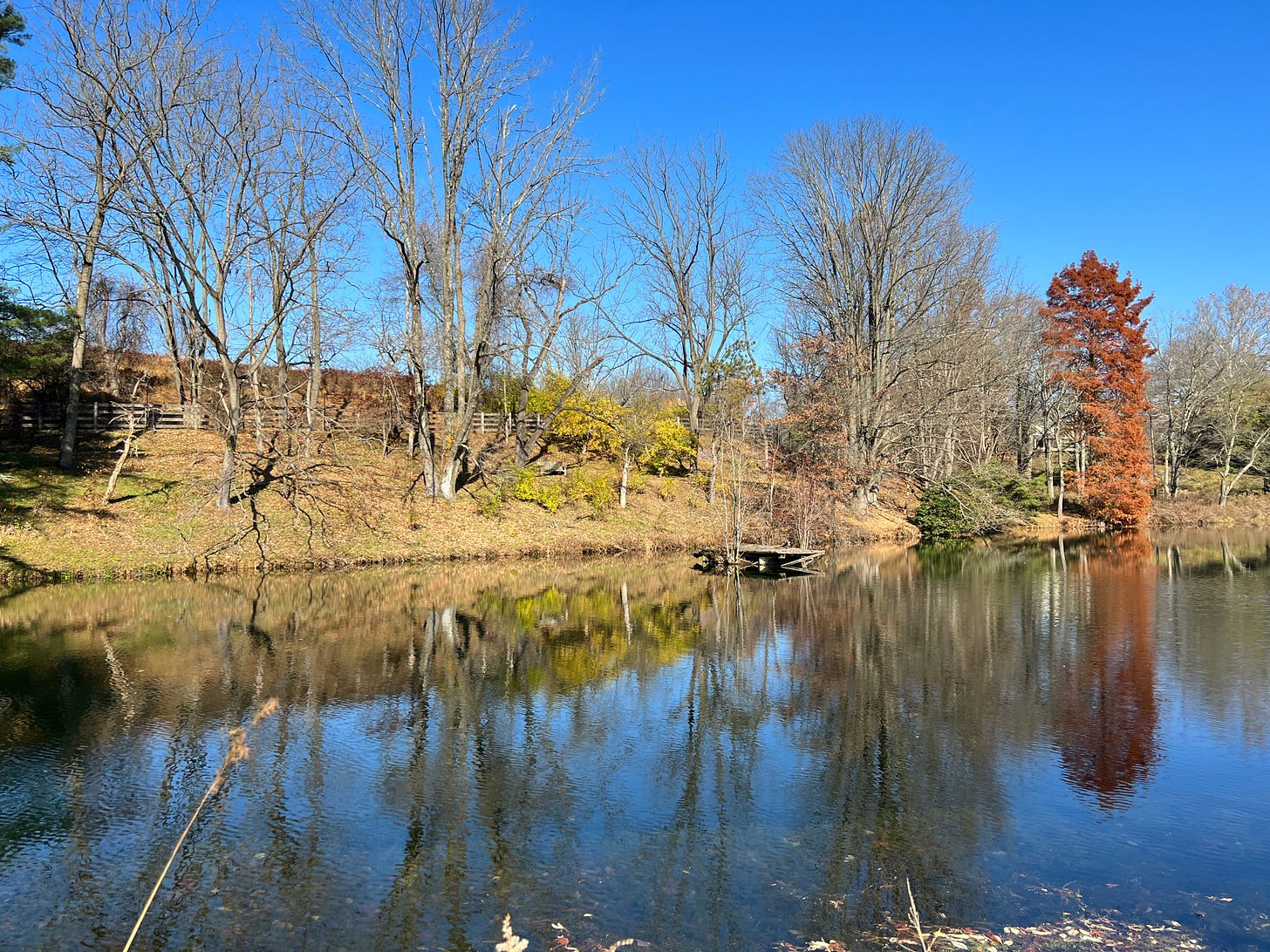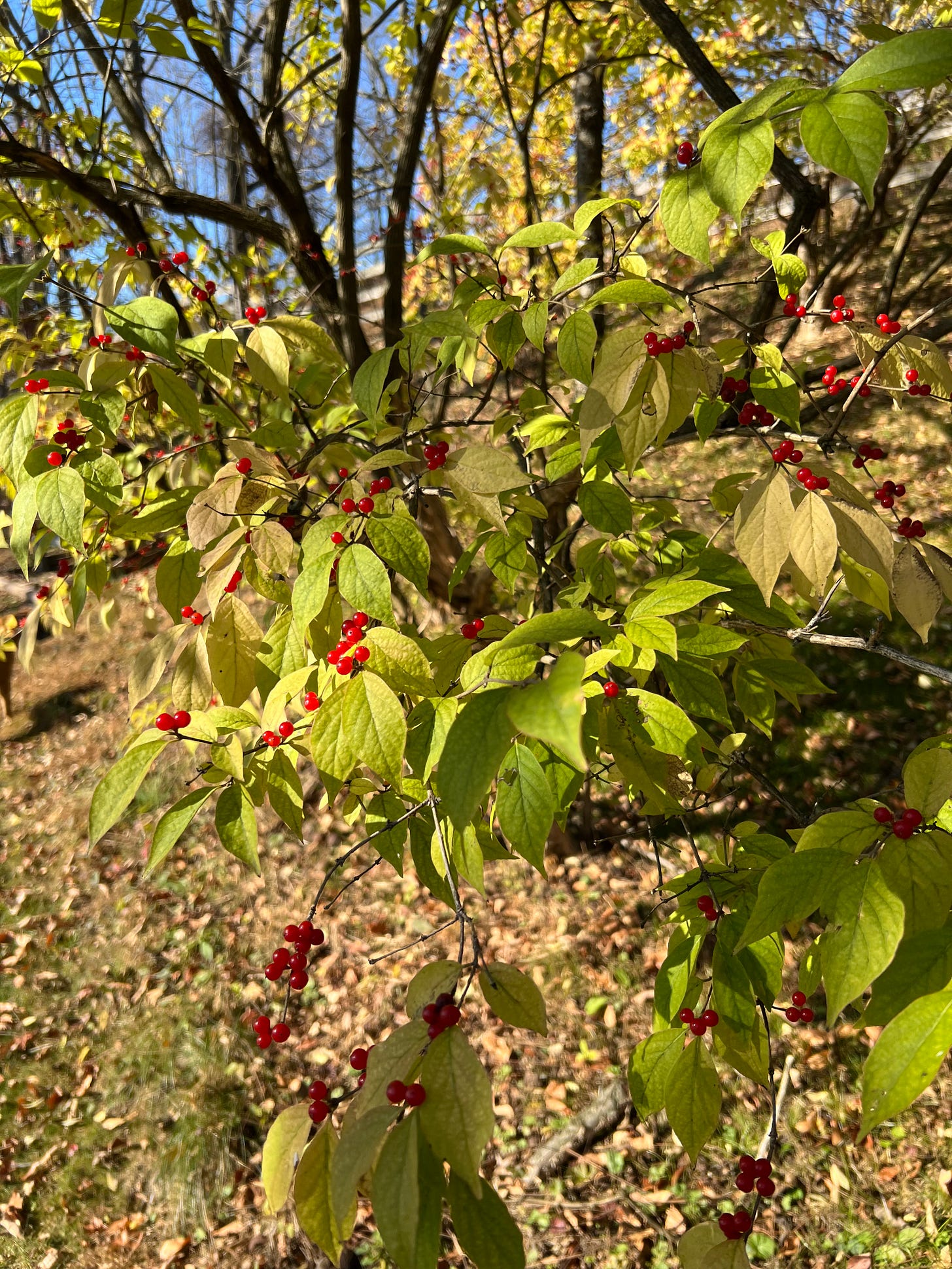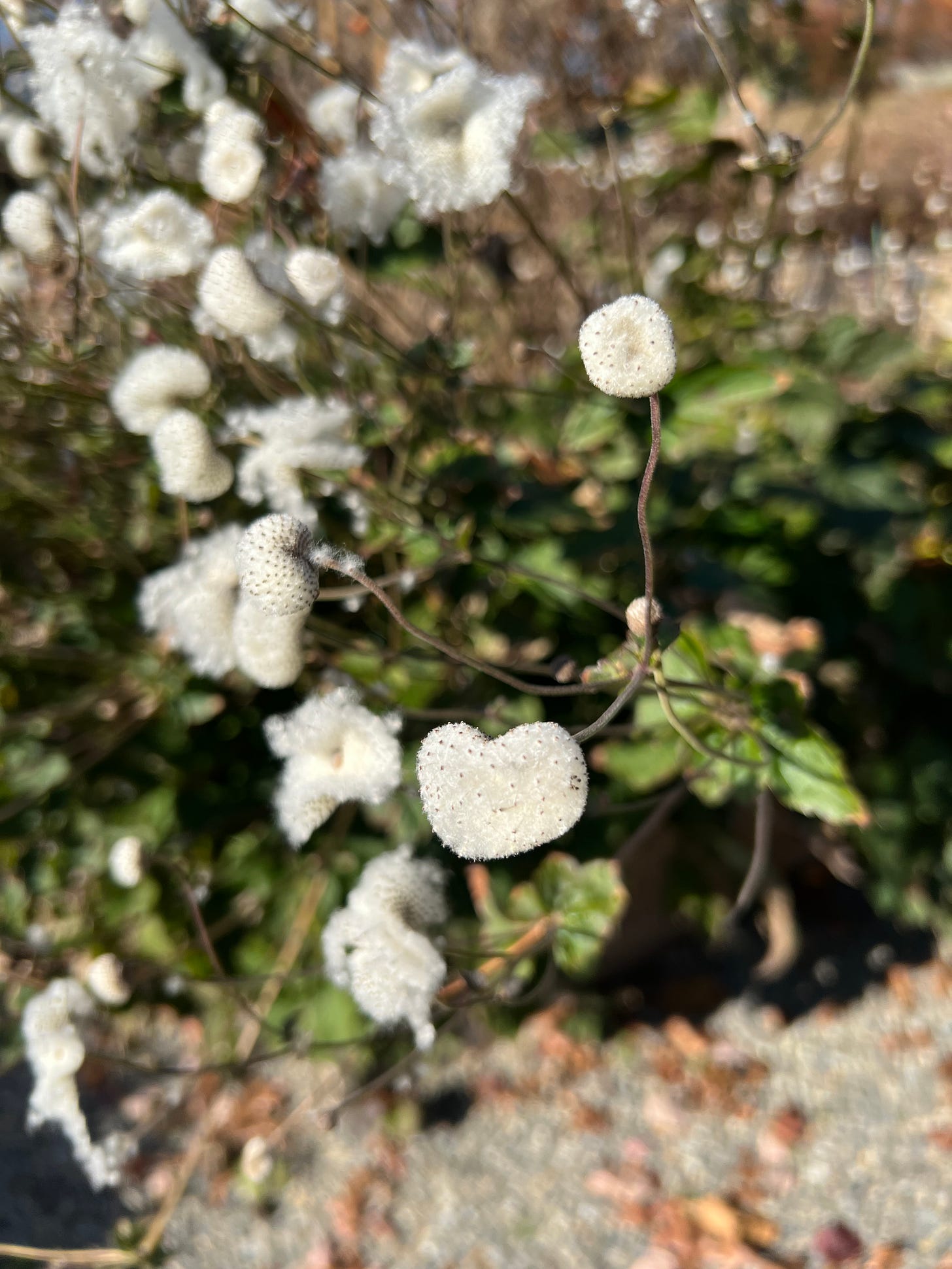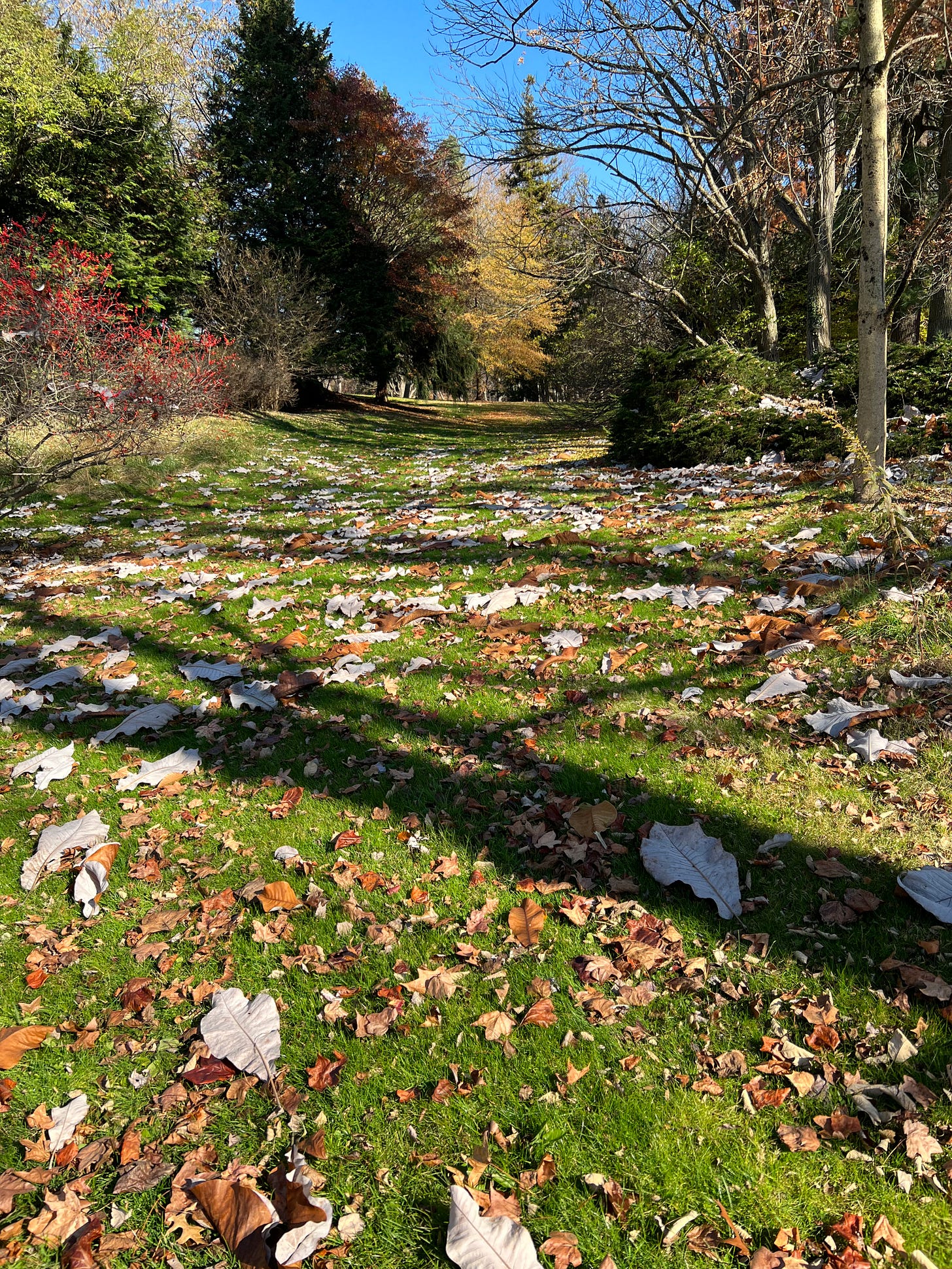Invasive Profile: Amur Honeysuckle
This shrub’s invasive qualities are on full display in late fall.
This time of year, Amur honeysuckle shrubs stand out in the landscape, rife with bright red berries and holding their yellow-green leaves until heavier frost arrives.
They are invasive in our area and throughout the Northeast and mid-Atlantic, enemies to both plant and animal biodiversity.
Under conditions common to our neck of the woods, Amur honeysuckle (Lonicera maackii) is a fast spreader and, once established, a fierce competitor. Like many invasive shrubs, it leafs out early and holds its leaves late, giving it an advantage over less aggressive natives. It forms thickets that cast thick shade, deterring competition. And a proliferation of berries help it spread far and wide.
The New York Botanical Garden, of all places, introduced this invader to North America, importing it as an ornamental plant in 1898. The shrub was once popularly used for erosion control in the Northeast, which contributed to its spread into natural areas.
According to Invasive.org, “It is adaptable to a range of conditions from sun to deep shade and wet to dry. It occurs in disturbed habitats including forest edges, forest interiors, floodplains, old fields, pastures, and roadsides.” No wonder it thrives.
We have an especially large community of Amur honeysuckle on the slope above the big pond. Its yellow-green fall foliage stands out prominently near the center of this photograph:
Up close, you can see that the leaves continue to photosynthesize (plenty of green left there) and many berries have yet to be eaten:
I have hesitated to cut down these shrubs before having an overarching strategy, because they’re helping hold the soil and their short-term impact on bird life is decidedly mixed.
Invasive.org reports that “researchers in the Midwest found increased nest predation of robins using Amur honeysuckle as a result of plant structure which facilitates access to nests by predators such as snakes. While the carbohydrate-rich fruits of exotic honeysuckles provide some nutrition for birds and rodents in winter, they do not compare to the lipid-rich fruits of native species that provide greater energy to sustain migrating birds.”
Penn State Extension writes, “The berries of non-native honeysuckles have fewer carotenoid pigments than native berries, which help to strengthen the bright red feathers of cardinals. In addition to being a less adequate food source, many non-native invasive shrubs also have negative impacts on chick survival.” Furthermore, “Bird nests found in these non-native shrubs have been reported to have less brood survival, which was attributed to higher predation levels. Because the non-native shrubs leaf out earlier than all the surrounding native vegetation, the nests lose the protection of a more closed canopy with a majority leafed out; the nests were more visible and exposed to predators such as raccoons and hawks.”
Yet, these invasive shrubs do support some birds. A study published in the Journal of Ornithology that focused on forest edge habitat “found that both birds and arthropods were more abundant and diverse in honeysuckle-invaded habitat than uninvaded areas” [emphasis mine]. However, “Birds commonly found in more urbanized areas were associated with honeysuckle invasion, while more sensitive species were associated with sites free of honeysuckle.”
In other words, Amur honeysuckle invasion may favor some species (possibly cardinals and robins, the studies suggest, as well as other resilient native birds) but harms overall native bird diversity.
In addition to soil erosion, what concerns me about undertaking wholesale removal of the Amur honeysuckle at Puddock Hill is the prospect of removing too much habitat without replacing it. While many of the shrubs on the hillside are young and do not yet provide suitable habitat for nesting, a few are quite substantial. I have already planted some trees and shrubs on the slope (particularly dogwood, black cherry and blueberry), and nature has filled in some others (notably sassafras), but they’re all still too small to provide nesting opportunities.
This year, nesting in our bird boxes was down, especially along the driveway. When I cleaned the boxes for winter, I found nine nests in fourteen boxes, although at least one of those nests looked like it was prematurely abandoned. Eight of fourteen would be less than sixty percent. Puddock Hill needs more nesting birds, not fewer.
Any new native shrubs I plant on that slope will take time to get established and grow big enough to support much bird life. It’s also a big area, and I don’t have the budget for extensive plantings next spring.
As such, I’ve decided to proceed cautiously on removal of the honeysuckle shrubs. I think I’ll pick a manageable area (maybe a third of the area invaded), cut that down to the ground soon, and replant native shrubs such as American hackberry (Celtis occidentalis), spicebush (Lindera benzoin), and serviceberry/shadbush (Amelanchier canadensis) in spring.
While this plan is less satisfying in the immediate term than simply killing all the invasive shrubs, it may support more bird life in the intermediate term, before increasing diversity once new native plantings get well established.
I suppose I’ll be living with some Amur honeysuckle shrubs through a few more autumns.
Seed pods appear like cotton balls on native anemone in the raised bed garden:
Wood ducks (I think—I couldn’t get close enough) visit the big pond:
A view toward the wet woods and the house from below the big pond:
Leaves of native bigleaf magnolia (Magnolia macrophylla) litter the lawn by the springhouse like discarded newspapers:
Nearby, non-native gingko leaves carpet the ground:









